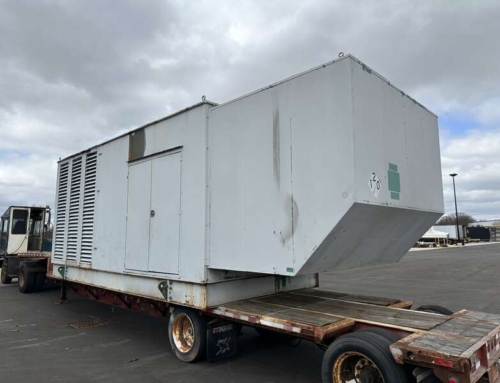Industrial generators are a highly preferred power supply solution for regular and emergency use. Basically, industrial generators produce 3000 to 7000 watts, which is enough electricity to power communication devices, small and big electrical appliances, and huge machinery. Users can install industrial generators to ensure a smooth electricity supply in situations of power outages or blackouts.
However, it is crucial to acknowledge that only professional electricians must get involved in setting up and accessing industrial generators into main electrical panels. Nonetheless, several people have implemented a popular trick of backfeeding these panels from industrial generators.
What is Backfeeding?
Whenever blackouts or power outages occur, several people remove the industrial generator and plug it into some non-approved method or a dryer to leverage electricity flow into their commercial or industrial settings.
By backfeeding a generator, commercial or industrial owners let unfiltered electricity flow through their circuits, which might cause overload due to some appliances or equipment connected to those circuits. Hence, overloading those circuits might result in the burning up of your electrical appliances and other machinery.
Backfeeding a generator can result in multiple consequences, including putting your workers or colleagues at risk. The reverse flow of power, which is generated by backfeeding, might also cause the generator to explode, eventually resulting in huge damage to your workplace settings.
Why is Backfeeding A Generator Dangerous and Illegal?
Even though many people might think that backfeeding is a harmless shortcut, did you ever think about whether it is illegal or not? Fortunately, backfeeding is illegal in most jurisdictions. Furthermore, it is also dangerous as it strains generators and unbalances electrical loads.
If you fail to shut off the main breaker, power moves back to the utility lines outside your commercial or industrial setting, potentially shocking the maintenance worker. Ultimately, you will be the one responsible for the mishap or injury of your workers under such circumstances.
Generators hold the potential of creating backfeeding when connected to a wall outlet and doing so is a big no. Do not ever plug your generators directly into the electrical system or wall outlet. If done, the generator, which is your alternate power source, might receive energy back through the electrical system of your workspace, through the meter and back into your power.
Moreover, generators that are installed permanently but are not used correctly can also backfeed the grid. Hence, the optimal way for the safe installation of your generator is to disconnect it from the grid through a manual or automatic transfer switch, according to your generator.
Safety Measures To Implement Against Backfeeding
Even though it is advised to avoid backfeeding, as it is extremely dangerous completely, there are several measures that you must consider to protect your belongings and utility workers from the risk of death and injury.
- Whenever possible, be sure to install a permanent and large generator, like an industrial one, to offer a power supply to your work settings.
- These generators come with a device called a transfer switch that isolates the main circuit from the generator. This feature effectively avoids backfeeding by preventing the electricity from the generator from moving back into the powerlines, keeping you protected and ensuring the safety of utility lines for the utility workers.
- In addition, the transfer switch also prevents your generator from encountering the strain that is caused by two working power sources.
Usually, small, portable generators do not have sufficient power to function in any industrial or commercial setting and are not at all recommended for the same. Therefore, always make sure to install a reliable industrial generator that can also be durable, offering continuous and uninterrupted power supply to your work settings, boosting your overall productivity.
Pick Generators That Last With Central States Diesel Generators
To offer your entire industrial or commercial space, one of the best and most permanent power solutions is to install an industrial generator. Choose from a range of options available at Central States’ Diesel Generators. Industrial generators from the Central States are the most reliable and safe option, and they also last longer than other power supply solutions!
Common Questions About backfeeding Diesel Generators
Q1. What results in backfeeding?
Backfeeding occurs whenever a generated power source is connected to your commercial settings without the power supply isolation, generating an unintentional and new way for power to move back to the basic energy flow.
Q2. What are the consequences if a generator is functioning and power moves back?
If power gets restored when your generator is backfeeding, it might result in extensive damage to the generator.
Q3. Can I safely back-feed my industrial generator?
Backfeeding your industrial generator might lead to the injury or death of any of your workers present in the location.
Q4. What do you understand about backfeed protection?
Backfeed protection is a safety mechanism that effectively blocks the reverse flow of power from the UPS to the main supply. It protects both the technicians and the equipment.
Q5. How can I stop backfeeding?
You can avoid backfeeding when the driver output is not set to the highest level when the power of the receiver is turned down. Ensure to use a series resistor to prevent backfeeding.
Q6. Mention the most suitable breaker for back feed.
Circuit breakers that are not marked ‘load’ and ‘line’ other ones to be considered suitable for back feed.
Q7. What measures should be taken to prevent electricity backflow?
Ensure to add a diode between the battery and panel to avoid backflow.
Q8. Is backfeeding a generator illegal?
Yes, it is illegal to backfeed a generator.








